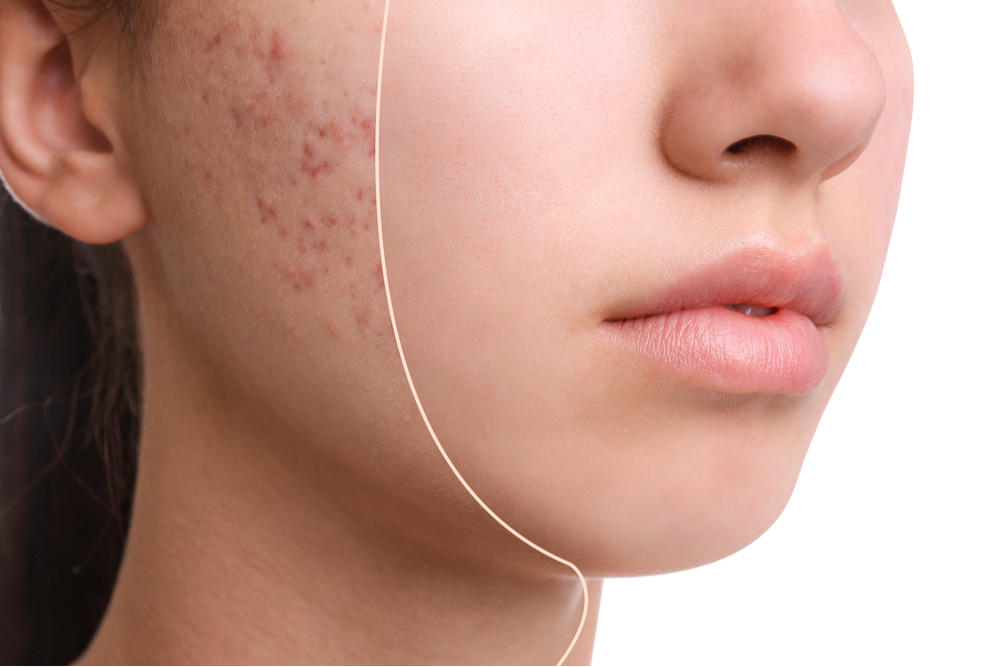Acne scars come in many forms, and while depressed scars are often discussed, raised or keloid scars can be even more challenging to treat. These scars form when the skin produces too much collagen during healing, leading to thick, raised, or even spreading marks that can affect confidence and self-esteem. If you are exploring Acne scar treatment in Dubai (علاج ندبات حب الشباب في دبي) , understanding the best options for raised or keloid scars will help you make an informed decision.

What Are Raised and Keloid Scars?
Raised scars, also known as hypertrophic scars, are thickened areas that remain within the boundary of the original acne lesion. Keloid scars, on the other hand, extend beyond the initial acne site, often growing larger and more noticeable over time. Both types can cause discomfort, itching, or tenderness, and they can be difficult to treat without targeted therapies.
Why Treat Raised or Keloid Acne Scars in Dubai?
Dubai’s hot climate and frequent sun exposure can make scars appear darker or more noticeable. In addition, raised scars can continue to grow if left untreated. Seeking acne scar treatment in Dubai ensures access to advanced, non-surgical options that help reduce the size, thickness, and appearance of these scars while improving skin texture.
Best Treatments for Raised and Keloid Acne Scars:
Corticosteroid Injections:
One of the most common treatments for keloid and hypertrophic scars is corticosteroid injections. These injections help shrink scar tissue by reducing inflammation and slowing collagen production. With multiple sessions, scars often flatten and become less noticeable.
Benefits:
- Effective for thick or growing keloids
- Minimal downtime
- Can be combined with other treatments
Cryotherapy:
Cryotherapy uses liquid nitrogen to freeze scar tissue, causing it to shrink over time. It is particularly useful for smaller keloids or when combined with corticosteroid injections.
Benefits:
- Non-invasive
- Effective in reducing scar thickness
- Often used in combination with other therapies
Laser Therapy:
Laser treatments, especially pulsed dye lasers, are commonly used for keloid scars. They help reduce redness, flatten raised tissue, and improve skin texture. In Dubai, advanced laser technology allows targeted treatment with minimal side effects.
Benefits:
- Reduces scar redness and improves texture
- Stimulates natural healing processes
- Can be combined with injections for better results
Silicone Gel or Sheets:
Silicone-based treatments help soften and flatten raised scars over time. They are often used after in-office procedures to enhance results and prevent scar regrowth.
Benefits:
- Non-invasive and safe for daily use
- Improves scar flexibility and appearance
- Works best with consistent application
Microneedling with Radiofrequency:
While microneedling is often used for depressed scars, when combined with radiofrequency, it can help remodel collagen and reduce raised scar thickness. This method is increasingly used as part of comprehensive acne scar treatment in Dubai.
Benefits:
- Stimulates controlled healing
- Improves skin texture and scar flexibility
- Works well when combined with topical or injection therapies
Surgical Excision with Follow-Up Therapy:
For very large keloids, surgical removal may be considered. However, since keloids can regrow, this option is often paired with corticosteroid injections, silicone therapy, or laser treatments to minimize recurrence.
Benefits:
- Removes large or persistent keloids
- Immediate reduction in scar size
- Usually followed by preventive treatments
Factors to Consider Before Choosing a Treatment:
Not all raised scars are the same, and treatment effectiveness depends on several factors:
- Scar Size and Location: Larger scars may require a combination of treatments.
- Skin Type: Darker skin tones need tailored therapies to avoid pigmentation issues.
- Recurrence Risk: Keloids are known for returning, so maintenance therapy may be necessary.
- Lifestyle: Consistent follow-up and aftercare improve long-term results.
FAQs About Raised Acne Scar Treatment in Dubai:
Do raised or keloid scars go away on their own?
No, these scars rarely fade without treatment. In fact, keloids may continue to grow if left untreated.
How many sessions are needed for effective treatment?
This depends on the size and type of scar. Corticosteroid injections, for example, may require several sessions spaced weeks apart.
Is laser therapy safe for darker skin tones?
Yes, but specialized lasers and settings should be used to minimize risks of pigmentation changes.
Can treatments completely remove scars?
Most treatments focus on reducing scar size, thickness, and visibility. While complete removal is rare, significant improvement is possible.
Are results permanent?
Results can last long-term, but keloids have a tendency to recur. Preventive maintenance may be needed.
Conclusion:
Raised and keloid acne scars require a different approach compared to depressed scars. The most effective Acne scar treatment (علاج ندبات حب الشباب ) often includes corticosteroid injections, cryotherapy, laser therapy, or a combination of methods to flatten scars, reduce redness, and improve skin texture. While complete removal may not always be possible, modern treatments offer significant improvement and long-lasting results.